By Tom Davis, Jr.
“The Gun That Made the Twenties Roar”
Many stories involving the Thompson have been written over the years. The first near complete historical publication was The Gun That Made The Twenties Roar by William J. Helmer, first published in 1969. Prior to this publication, most stories on the Thompson were only a rehash of old news and magazine articles – some accurate, some not. Mr. Helmer’s attention to detail from the beginnings of General Thompson’s dream in the early 1900s until the end of World War II is exceptional. However, instead of continuing his scholarly efforts, he chose to end the story with a brief summation about what happened after Maguire Industries, Inc. sold off the Thompson submachine gun.
In a few short paragraphs, Mr. Helmer told of a corporate re-organization where the once famous Auto-Ordnance Corporation was renamed as a division of Maguire Industries, Inc. and how later, the Thompson was transferred from Maguire Industries to Kilgore Manufacturing Company, then to Frederic A. Willis and finally to Numrich Arms Comapny.
According to Mr. Helmer’s footnotes, much of this information was provided by George Numrich, the last party in this series of transactions. Of course, it was all new information at the time so everyone was pleased just to learn how the Thompson actually made the move from Maguire to Numrich.
Until now, this is all that has been recorded about the Thompson during the last years at Maguire Industries. In 1945, the Thompson submachine gun at Maguire Industries was packed away in crates and lay dormant in a warehouse taking up space until an unexpected offer to purchase the Thompson in 1949 came from the Kilgore Manufacturing Company of Westerville, Ohio. Kilgore reportedly had no interest in the Thompson, but apparently thought a market existed for the Thompson in Egypt. Kilgore reportedly paid Maguire $385,000. The Kilgore deal with the Egyptians never materialized and Kilgore later sold off the Thompson without ever opening the crates.
Maguire Industries
Why Maguire Industries sold the Thompson can be resolved in one word: money. Russell Maguire was a very capable businessman who saw a great opportunity with the nearly defunct and broke Auto-Ordnance Corporation; a business entity that had been going nowhere for many years. With Maguire’s money, talent and hand picked management team, he turned this soon to be liquidated business into a great and profitable manufacturing empire. Maguire also had the foresight to look past the end of World War II and realize the Tommy Gun business was going to end. After all, under his watch, the Auto-Ordnance Corporation was responsible for the manufacture of over 1,750,000 Thompsons – all the world would need for many years to come. Actual production of the Thompson ended in February 1944. Maguire wisely packed away the Tommy Gun at the end of the war and diversified his business enterprise for the years ahead.
Unfortunately, the years after World War II were not very kind to Maguire Industries. Part of the reason may have been the loss of his Executive VP and Chief Operating Officer, Eugene Powers, who left Maguire Industries in June 1945. Powers had been with Maguire since the beginning of the Thompson venture; he was actively involved in the negotiations to purchase the Auto-Ordnance Corporation and the creation of the Thompson Automatic Arms Company. By 1949, Maguire Industries was having serious monetary losses. Powers came back to Maguire Industries in 1950, shortly after the sale of the Thompson, and returned the corporation to profitability.
Frederic A. Willis
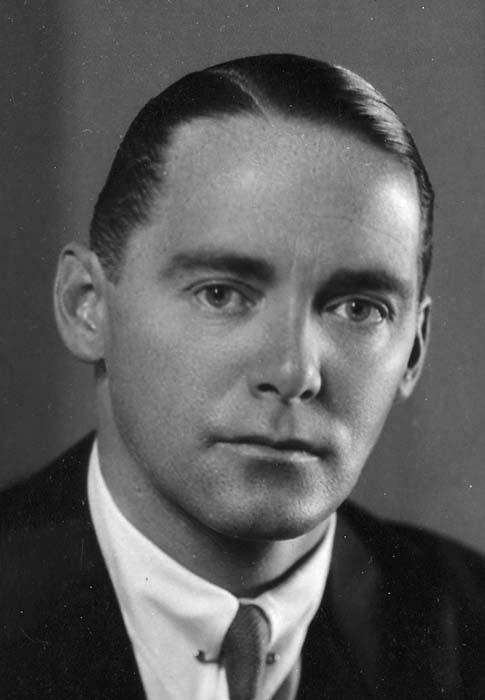
The president of Kilgore in 1949 was Henry Watkins. In a short letter to Mr. Helmer in 1964, Mr. Watkins disclosed how Kilgore Manufacturing was introduced to the deal that led to the purchase of the Thompson from Maguire Industries by a man named Frederic Willis, a former Vice-President of the Auto-Ordnance Corporation. Specific details of the actual deal brokered by Willis involving the sale of the Thompson between Maguire Industries and Kilgore Manufacturing are unknown.
The revelation that Frederic Willis actually brought the Thompson deal to Kilgore is very revealing. Willis was hired as a Vice-President of the Thompson Automatic Arms Corporation (TAAC) and its subsidiary, the Auto-Ordnance Corporation (AOC), by Russell Maguire in June 1940. Willis was a former Army officer and a veteran of the Mexican border service and the First World War. His first assignment was the arms expansion program at TAAC/AOC. Willis was quoted in a 1940 New York Times article as saying, “With current methods of warfare, the submachine gun is to modern military units what the blitzkrieg is to modern military tactics. It steps up tremendously the firepower of the individual soldier or unit.”
It appears Russell Maguire sought out one or more of his former executives in an attempt to sell the Thompson business. The bond between Maguire and Willis must have been very strong. During his tenure with Maguire Industries, Willis authored a book on the Thompson submachine gun, privately printed at least one copy, and presented it to Russell Maguire.
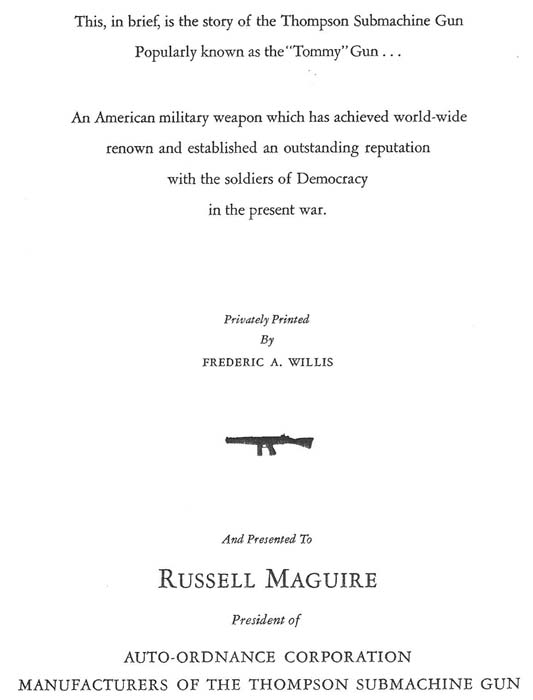
With Kilgore looking to expand its business line and Willis looking for a buyer of a product no longer needed by Maguire Industries, a deal was struck. Eugene Powers was not involved in the 1949 deal between Maguire and Kilgore, but he related to Mr. Helmer in a letter dated May 1, 1964, that, “The drawings, blueprints, dies and other assets strictly related to the submachine gun were sold, I believe, to Kilgore.”
George Numrich reported to Mr. Helmer that he had heard the deal between Maguire Industries and Kilgore “was transacted from start to finish in less than 48 hours.” Obviously, this could have only happened if Russell Maguire was directly involved in the sale.
The Kilgore Manufacturing Company
The Kilgore Manufacturing Company was started in 1912 by Joseph D. Kilgore in Homestead, Pennsylvania to manufacture small cast iron cap pistols and mechanical toys. In 1918, Kilgore moved its operation to Westerville, Ohio. At one time, Kilgore was the largest toy cap pistol maker in the United States. Kilgore expanded its product line in 1929 with the establishment of the International Flare-Signal Division in Tippecanoe City, Ohio. During World War II, Kilgore became very active in the manufacturing of munitions and pyrotechnic devices. The Westerville plant had a north and south side that was separated by a main highway. The north plant was engaged in the manufacture of toy guns and caps. The south plant was used to manufacture items for government sales, mainly pyrotechnic devices. Interviews of several former Kilgore employees disclosed that after World War II, Kilgore was searching for ways to supplement the toy line and expand its business operation.
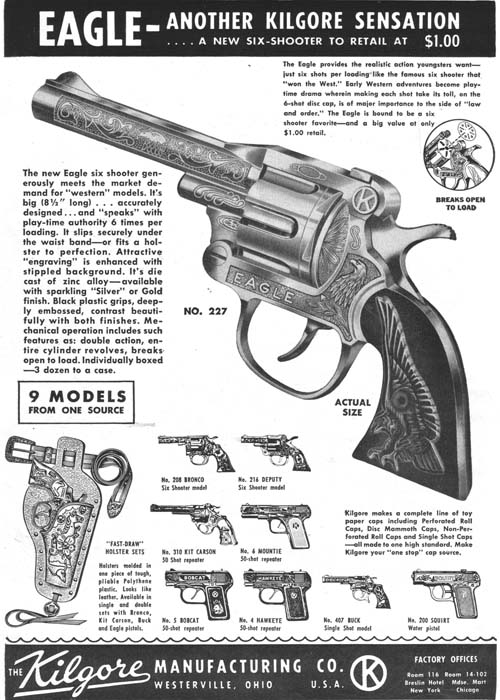
The 1964 letter by Kilgore President Henry Watkins also told how Kilgore Manufacturing Company purchased “the tools for the Thompson submachine gun” from Maguire Industries. Watkins stated Kilgore made the purchase intending to sell the tools to manufacture the Thompson to a foreign country. Watkins did not reveal the foreign country or the reason the deal did not occur, but did state Kilgore “never actually manufactured any (new) submachine guns.” However, Kilgore did acquire in the sale, or assembled from parts after the sale, some complete Thompsons. Watkins told how Kilgore had “a license issued by a Federal agency” and actually sold “about a half dozen guns” before getting out of the machine gun business.
According to George Numrich, who later purchased the Thompson from Frederic Wallis, Kilgore reportedly paid Maguire Industries $385,000 for all rights and interest to the Thompson submachine gun. As this story unfolds, it will become quite apparent that Willis would have been a very informed party regarding each sale of the Thompson since it left Maguire Industries.
The Thompson at Kilgore Manufacturing was described by retired Kilgore VP Robert Long as a “hush hush venture” that was run out of the front office. According to Long, the rank and file employees at Kilgore knew nothing or very little about this project. Mr. Long had very little contact with the “machine gun outfit” at Kilgore; however, he does recall seeing a machine gun at the plant one day that had a drum attached underneath it in a building on the south side of the plant. The building was broken up into various rooms and the machine gun stuff was located in one of the rooms. Mr. Long remembered the building was not in use before the Thompson parts were moved into it; he also recalled the building was last used to make chemical igniters for flamethrowers.

Was Kilgore only purchasing the tools to manufacture the Thompson with the plan to sell these assets off to a foreign government? The search for answers involved many interviews with every former and retired Kilgore employee that could be located. Unfortunately, due to the passage of time, many have passed away. However, one employee knew exactly what the author was taking about when the interview topic referenced the Thompson. Interestingly, this employee, Bob Tillman, was never at the Kilgore plant in Westerville, but was hired by Kilgore after the Kilgore operation left Westerville, Ohio in 1961 and moved to Tennessee. While searching for something in an old file cabinet that had been moved down to Tennessee from the Westerville plant, Bob noticed an unusual sales brochure with a picture of a gun and the Kilgore logo. It was definitely not a cap gun, and not something Bob had ever seen associated with Kilgore. This brochure was rescued and set aside; shortly thereafter, the file cabinet and all remaining contents were discarded. The brochure tells a story by itself and also reveals another business venture contemplated by Kilgore management officials who purchased the Thompson. The brochure’s striking resemblance to older Thompson catalogs is uncanny. Without doubt, someone at Kilgore used an original Auto-Ordnance catalog as a guide for the design of the Kilgore Thompson sales brochure.
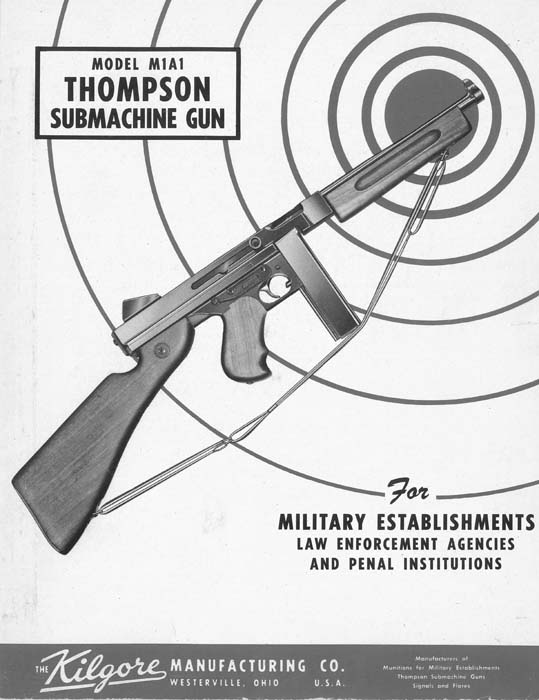
In 30 short years the Thompson motto had gone from General Thompson’s, “On the Side of Law and Order” to Kilgore’s, “Fire Power Is Peace Power” – an uncanny similarity in message. Kilgore apparently liked the use of slogans or motto’s for the products it produced. The motto for the well known Kilgore safety flare was, “Light your way for safety.”
Page 4 of the brochure referenced how Kilgore is a manufacturer of the Thompson submachine gun. It also advertises that spare parts “are available for immediate delivery” for all models of the Thompson. This is the only Kilgore brochure on the Thompson that has been located to date – and the only Thompson brochure found in the aforementioned file cabinet.
The H.P. White Laboratory
Careful reading of Mr. Helmer’s treatise on the Thompson did reveal a small clue about the happenings at Kilgore involving the Thompson. Hidden away in the footnote section is reference to an event that indicates the officials at Kilgore did not just purchase the Thompson to store or sell parts.
It appears someone at Kilgore opened some of the crated parts and found at least two Model 1923 Autorifles that were submitted to H.P. White Laboratory, Bel Air, Maryland, for testing purposes in 1949. Inquires at H.P. White revealed that Kilgore was a customer of H.P. White Laboratory in 1949. Not only did Kilgore submit the Model 1923 rifles for testing, Kilgore also hired H.P. White to design a firearms range. Additional reports were made by H.P. White for Kilgore on a “comparative evaluation of a 7.92×57 prototype military rifle to the 7.62 Russian Tokarev rifle” along with reports on the Garand rifle, the Johnson rifle, and the MP43. The reports were dated July 13, August 5, August 10, and August 30 – all in 1949. The reports were addressed to: Dan Robinson, Ordnance Engineer, Kilgore Manufacturing Company, Westerville, Ohio
Interestingly, no report was located involving the Thompson Autorifles dated June 18, 1949. All efforts to obtain copies or review the remaining reports at H.P. White have been unsuccessful.
The Thompson at Kilgore
Numerous interviews of former Kilgore employees resulted in very little information concerning the Thompson at Kilgore. However, this all changed with the interview of former Kilgore employee John Ruyan. John started working for Kilgore in 1947 or 1948 as a chemist. He was later placed in charge of the south side of the Kilgore plant in Westerville. John recalled that Kilgore bought out a corporation that owned the Thompson and had the parts shipped to the Westerville plant. He does not know the exact reasoning behind why Kilgore decided to purchase the Thompson, but he believes the company was trying to expand its product line and thought the Thompson would fit right in with the other ordnance work it was doing. At the time, Kilgore made explosives and flares for the US Army – but John never did see the connection between the explosives, flares and machine guns.
John recounted the following story about the Thompson at Kilgore: “The crates containing the Thompson parts were locked in a building on the south side of the Kilgore plant. The north side of the plant, separated by East Broadway in Westerville, manufactured the cap guns, caps, toys and later, plastic items. The south side of the plant manufactured flares and munitions and was where the government business was conducted. The building that stored the Thompson parts had bars on the windows and doors installed before the Thompson parts arrived, and only one person, the project manager, had the key. While at Westerville, Kilgore Manufacturing was a very secure plant with fences and guards. The officials at Kilgore would not have taken a risk of losing any guns or parts. I was only in the building that contained the Thompson parts two or three times. I do not recall the exact year or years all of this occurred, but I believe the 1949 to 1951 time frame would be about right. I was in the building one time to take measurements to build a manufacturing or production line for the manufacture of flamethrower igniters. I am pretty sure the Thompson Project Manager was a man named Dan Robinson. Dan would have been in his 40s or 50s during that time. Whenever anyone at the plant needed access to that building, they had to go get Dan and he would accompany them to the building, open the door and stay with them until they left. I always assumed the government was somehow involved with this project the way the Project Manager guarded the parts. The crates were about 4 or 5 foot long, about 1 foot wide and 2 foot deep. The crates were full of gun parts and the parts were labeled. I would guess the number of crates I saw containing Thompson parts was somewhere around twenty, maybe less. The crates were stacked around the floor beside tables in what appeared to be the set-up for a production line to assemble the guns. I do remember a crate or two actually on the tables but most crates were on the floor beside the tables. I am fairly certain no individual parts were actually on the tables when I was in the building. I have set up many production lines over the years and it was obvious to me the intent of the layout I saw was to assemble guns. The set-up and parts I observed was in this building for approximately a year, maybe less, before being moved to make space for other government projects. I do not know what happened to the crates of Thompson parts.”
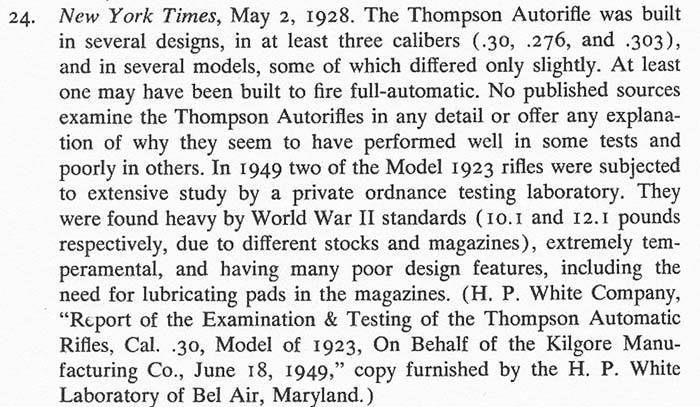

When asked to tell what story he remembers most vividly about the Thompson at Kilgore, John replied, the Thompson parts “grew dust” – he does not know of any activity involving the Thompson parts at Kilgore. The building that housed the Thompson parts is still standing, as are many of the buildings from the old Kilgore Manufacturing plant. In the ensuing years, the building has been partitioned inside for several different small business endeavors. Two new additions have been added on to the building over the years – but the original building is still intact.
John was in the US Army during WWII and handled a Thompson with a side cocking knob. John thought the parts he saw were for a Thompson with a side cocking knob. He never saw a completed or assembled Thompson at the Kilgore plant.
All efforts to date to locate Dan Robinson or his family have been unsuccessful. Only a few of the former or retired Kilgore employees interviewed actually remember Robinson by name. Retired Vice-President Long believes Robinson was the employee that landed the munitions deal with Pakistan for Kilgore. These are the same munitions that exploded at a port in South Amboy, New Jersey on May 19, 1950, killing 31 people and injuring approximately 400 others. Dan Robinson is cited by name in a June 30, 1950, United States Coast Guard “Report of Investigation of the explosion at South Amboy, New Jersey 19 May 1950.” Robinson is introduced as the “Works Manager of the Kilgore Company” where he describes to government officials the specifications of the anti-tank and anti-personnel mines manufactured at the Kilgore plant.
The explosion at South Amboy Harbor had a profound effect on Kilgore Manufacturing and certainly could have changed any future plans Kilgore had involving the Thompson submachine gun. The explosion resulted in many years of protracted litigation for Kilgore, Hercules Powder and several other companies. The explosion had a major impact on the operation of the plant. At the time of the explosion, Kilgore was owned by the Commercial Credit Company. The potential losses faced by Kilgore as a result of the explosion caused a complete reorganization of Kilgore. In order to stay in business and preserve future assets from potential legal judgments, the Commercial Credit Company sold all the assets of the Kilgore Manufacturing Company to a new company, named Kilgore, Incorporated. Commercial Credit retained the liquid assets of Kilgore Inc. in escrow account to protect against the lawsuits then pending. When the lawsuits were later settled, the Kilgore Manufacturing Company was dissolved into the parent corporation, Kilgore Incorporated.
The Egyptian Thompson: Do They Exist?
In 1963, Mr. Thomas B. Nelson reported in his reference book, The World’s Submachine Guns, the existence of a submachine gun referred to as an Experimental Egyptian Thompson. This .45 ACP submachine gun was reported to have the following markings stamped on top of the receiver: Auto-Ordnance Corp., Bridgeport, Connecticut, Reg. in U.S. Patent Office. The Egyptian Thompson was reportedly made in Egypt in the early 1950s and is “very crudely manufactured.” Mr. Helmer also noted the existence of this Egyptian Thompson in his footnotes and understood the possible significance or link between this Thompson, Egypt and the Kilgore Manufacturing Company. Mr. Helmer believed this Egyptian Thompson could have possibly come from parts of one of the prototype guns designed by Auto-Ordnance Engineer William Hammond in 1942. Hammond was the designer of the Auto-Ordnance Model T2, a submachine gun with a tubular receiver that was designed to one day replace the Thompson. In a letter to Mr. Helmer dated August 10, 1967, retired Auto-Ordnance employee George Goll stated that he did not know anything about an Egypt submachine gun and added that “these guns could not have (been) made from any parts left over from Hammond Gun since there were only two Hammond Guns made.” George Goll was not involved with the Thompson at Kilgore.

The reported Auto-Ordnance receiver markings have led to much speculation over the years that this Egyptian Thompson was somehow involved in the reported deal between Kilgore and Egypt. The Egyptian Thompson is currently on display at the National Firearms Centre in England, previously known as the Ministry of Defense Pattern Room. Noted British firearms enthusiast and researcher John Cross agreed to examine this Egyptian Thompson and reported the following information: “This submachine gun is very crudely made. There are no markings or numbers of any sort on any part of the gun. The gun pictured in Mr. Nelson’s book is indeed the same gun as on display at the National Firearms Centre. There is no background information on this gun at the Centre. However, a careful study of the Register of Firearms at the Centre indicates the acquisition would have been in the 1956 timeframe, around the exact time of the Suez Campaign of 1956. (A joint British and French armed expeditionary campaign that returned the Suez Canal back to British and French control after it was Nationalized by the Egyptian government.) The buttstock appears to be sawed off from an Italian Carcano rifle and has a poorly fitted alloy No. 4 buttplate. The foresight is similar to the Thompson Model M1A1 but homemade, and the rear sight is taken from some old military rifle, possibly a Martini. There is no provision for semi-automatic fire. It contains only two Thompson parts, the magazine and barrel – which is screwed only hand tight into the receiver. The extractor and the front part of the reduced diameter of the bolt have been brazed on the rear section of the bolt and then badly case hardened in an open furnace. The firing pin is machined into the breech face of what could possibly be the front section of a M1A1 Thompson bolt. Interestingly, the main spring cap is the sawed off base of an EC 43 steel .45 caliber ACP casing. The main spring was either originally not long enough or had broken and had been brazed together. The bolt body consists of a rear section of several sections welded together. The pistol grip is a machined block with the grips made of several sections of 1.5mm steel welded together in the same style as a Lewis gun. Despite appearances, the magazine catch is not from a Thompson gun.”
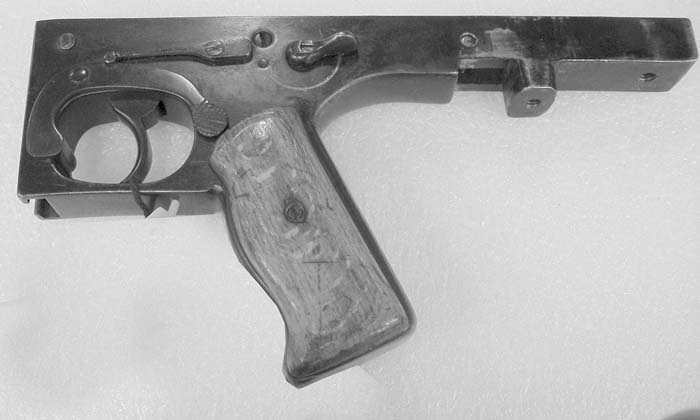
John made the following comment in regard to test firing this weapon: “As I had not remembered to bring my suit of armour or safety glasses with 1 inch thick glass, no attempt was made to fire this weapon!”

The mystery of the so called Egyptian Thompson was finally solved. With none of the reported Auto-Ordnance Corporation markings and obvious small workshop-like manufacturing techniques and parts, it can be positively stated this weapon is not related to the possible deal that Kilgore Manufacturing may have been negotiating with the Egyptian government in 1949 and/or 1950.

The Willis Syndicate
Approximately 3 months after the South Amboy explosion, Frederic Willis and three associates purchased back from Kilgore the “tools” for manufacturing the Thompson. Approximately fourteen months later, Numrich purchased the Thompson assets from Willis and a group of investors Numrich referred to as the “syndicate.”
Currently, the identity of only one of Willis’ associates involved in the Thompson deal with Kilgore is known. This associate is Theodore Hayes, most often referred to as “Teddy” Hayes. What is not generally known is Teddy Hayes was hired by Russell Maguire in the spring of 1942 as a Vice President of the Auto-Ordnance Corporation in charge of sales to the War Department and U.S. allies. While with Auto-Ordnance and later Maguire Industries, Hayes was described in the Washington DC Times Herald as “a natural for the post he holds, and important portals throughout the nation’s capitol open to him without a knock.” Hayes’ office was not at the Bridgeport plant, but in the nation’s capitol. His address as Vice-President of Maguire Industries was 726 Jackson Place, diagonally located across the street from the White House.
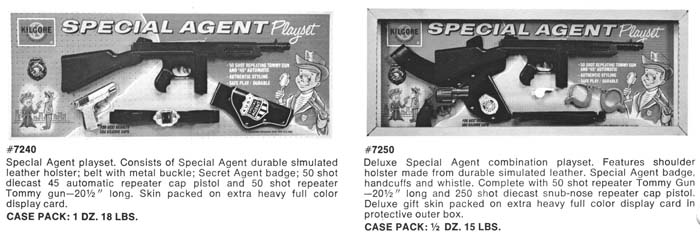
All efforts to locate members of Frederic Willis’ immediate family and identify the other two associates involved with Willis and Hayes have been unsuccessful. Very little information involving Mr. Willis has surfaced since he left Auto-Ordnance. Unfortunately, the man that brought the Thompson deal to Kilgore and later purchased and then sold the Thompson passed away in 1967.
It is interesting to note Frederic Willis is listed as the seller on several (maybe all) of the Thompson submachine guns and receivers acquired by George Numrich in 1951. The Thompson Collectors News lists Thompson submachine gun, serial number NAC 5, as being acquired by Numrich Arms Company from Fred Willis on December 1, 1951. In Gordon Herigstad’s excellent reference book, Colt Thompson Serial Numbers, Thompsons with serial numbers NAC 2 and NAC 15 are also listed as being transferred to Numrich from Fred Willis.
The Numrich Arms Company
It was very puzzling how the great majority of former and retired Kilgore employees knew absolutely nothing about the Kilgore Thompson. One would have thought the delivery of a huge quantity of machine gun parts to a small town in Ohio would have been a noteworthy event. Could the twenty crates of parts remembered by Kilgore manager John Ruyan be all the Thompson assets – and for $385,000?
The answer to the location of the Thompson assets packed away in crates and stored in a warehouse by Maguire Industries may have been answered in a Numrich Arms Company undated brochure published in what appears to be the mid 1950s. The introductory paragraph tells the reader that the brochure is a “little booklet showing a few scenes of our West Hurley, N.Y. plant.” It then states, “No pictures of our Bridgeport, Conn. or Long Beach, Calif. warehouses are included since mostly cased goods are kept there.”
In a 1964 letter to Mr. Helmer, George Numrich stated the Willis syndicate held the Thompson assets in a warehouse that they “never went near” prior to the sale of the Thompson to his company. While not completely definitive, it is certainly noteworthy that Numrich also stored cased goods at a Bridgeport, Connecticut warehouse; the home of the former Auto-Ordnance Corporation and location where the Thompson was packed away and stored in crates by Maguire Industries in 1945.
An Internal Revenue Service Investigation
An Internal Revenue Service investigation was started as a result of Numrich Arms Company registering with the IRS Alcohol and Tobacco Tax Division (ATTD) approximately 95 guns. A 1967 letter from the Director of the ATTD to Mr. Helmer revealed this investigation documented the Kilgore Manufacturing Company purchased from Maguire Industries in early 1949, “the equipment and inventory to manufacture the Thompson Submachine Gun.” Included in these assets from Maguire were “a number of assembled submachine guns and sufficient parts to assemble others.” Kilgore later sold these assets to Frederic Willis and three of his associates on August 7, 1950. According to George Numrich, Kilgore “had not renewed their license” when they sold the Thompson “package” to Willis. The transfer of these submachine guns and parts from Kilgore to Willis resulted in a taxable event according to US laws and regulations relating to the transfer of machine guns – and the IRS wanted the tax that was due and owing. Representatives of Kilgore held several conferences with ATTD and the tax liability was “settled on a fair and equitable basis.”
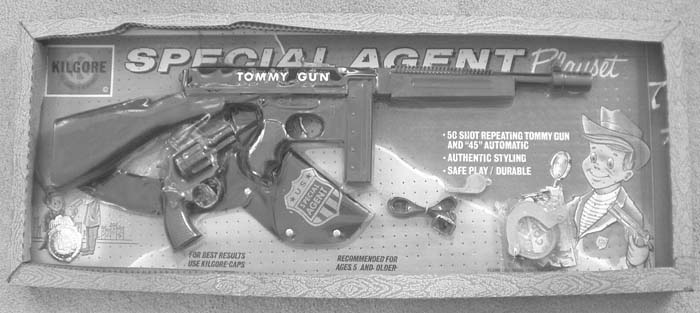
The ATTD investigation also included the sale of the Thompson assets by Willis to the Numrich Arms Company on October 23, 1951. Willis was found not to be a qualified dealer or manufacturer under the National Firearms Act, hence the resulting assessment of transfer taxes against “Willis and his three associates” in what the ATTD termed a “business venture.” The investigation goes on to say that after a complete review of all the facts, the tax liability against Willis and his three associates was “compromised in an appropriate manner.” George Numrich later informed Mr. Helmer that he believed Kilgore paid $15,000 in taxes. Numrich also heard the Willis “syndicate” was trying to settle with the IRS for $300.
It is now very clear why Kilgore was assessed the transfer tax. Kilgore had definitely opened at least some of the crates, understood the need for federal licensing to manufacture and sell National Firearms Act weapons and sold at least a half dozen submachine guns. In addition, a quick review of the Kilgore brochure explains why the officials at Kilgore could not claim they did not contemplate a plan to manufacture and market the Thompson in the United States. Additional information on the Thompson guns sold by Kilgore or what happened to the Thompson parts at the Kilgore plant is still a mystery.
Kilgore Today
Kilgore, Inc. relocated from Westerville, Ohio to Tennessee in 1961. Around the time of the move, Kilgore merged with another company owned by the Commercial Credit Company – the Harvell Corporation. At the time, Harvell was well known for its houseware products. Two plants were initially opened, one in Bolivar, TN and one in Toone, TN. The plant in Bolivar manufactured toy cap pistols and houseware products, the plant in Toone manufactured caps and military pyrotechnics. The name Kilgore, Inc. was changed to Harvell-Kilgore Corporation. In 1963, Commercial Credit sold the Harvell-Kilgore Corporation to the American Snuff Company of Memphis, TN. American Snuff later became the Conwood Corporation. Because of declining sales, Conwood later ceased production of houseware products and dropped the name Harvell from the corporate name. In 1981, Allegany International purchased the Kilgore Corporation. Around 1985, Kilgore stopped the production of cap guns. In 1991, the production of caps ended when the cap making machines were sold to a company in New York. The Kilgore Corporation was acquired in 2001 by a British company and is now known as Kilgore Flares LLC, a member of the Chemring Group. Kilgore has been involved in many ventures throughout its history, but two areas, toy cap pistols and pyrotechnics have always been the mainstay of the business. Today, the toys and caps are no more, but Kilgore Flares is a known leader throughout the world in the development and production of airborne expendable countermeasure decoy flares.
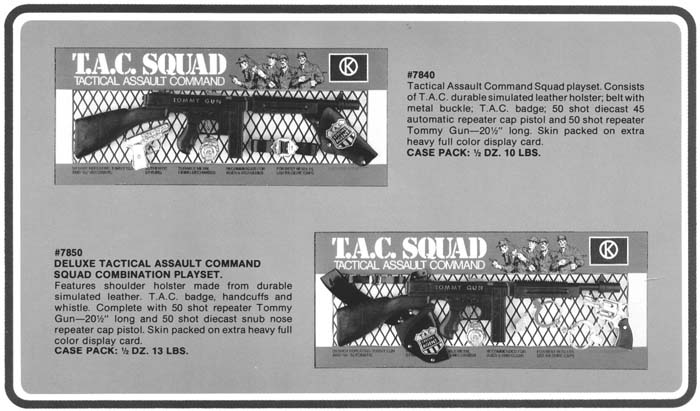
The Kilgore Tommy Guns
Kilgore did produce a toy Thompson while located in Tennessee. It was part of a toy set known as the “Special Agent Playset.” This toy first appeared in the 1973 Kilgore Toy Catalog.
The Special Agent Playset was featured in Kilgore Catalogs until 1977 or 1978. In 1979, a new Playset, “Tactical Assault Command Squad,” was featured with a similar Tommy Gun. This Playset was also included in the 1980 Kilgore toy catalog.
Tim Goss, a prominent Kilgore collector from Westerville, Ohio, reported all the Tommy Gun Playsets, along with the individual toy guns and accessories contained in the Playsets, are quite scarce today.
The End of the Kilgore Story
Unfortunately, the end of the Kilgore story is far from complete. Given the passage of time it is going to be very difficult to obtain additional first hand information from the parties involved at Kilgore. Many parties interviewed for this story were in their 80s and 90s. Additional documentary evidence will certainly surface in the future, much like the information in this article that came to light. However, one issue that can now be laid to rest is what Kilgore planned to do with the Thompson business. Kilgore was (and always has been) a manufacturing company. The Kilgore brochure clearly shows Kilgore planned to be a manufacturer of the Thompson submachine gun. Of course, the manufacturing of the M1A1 Thompson by Kilgore did not take place – other than the possible assembly from parts of a few guns. The IRS investigation and other sources cited above, established that Kilgore purchased the Thompson from Maguire Industries and firmly established ownership of the Thompson for Kilgore Manufacturing, the Willis group and the Numrich Arms Company.
| This article first appeared in Small Arms Review V11N12 (September 2008) |











